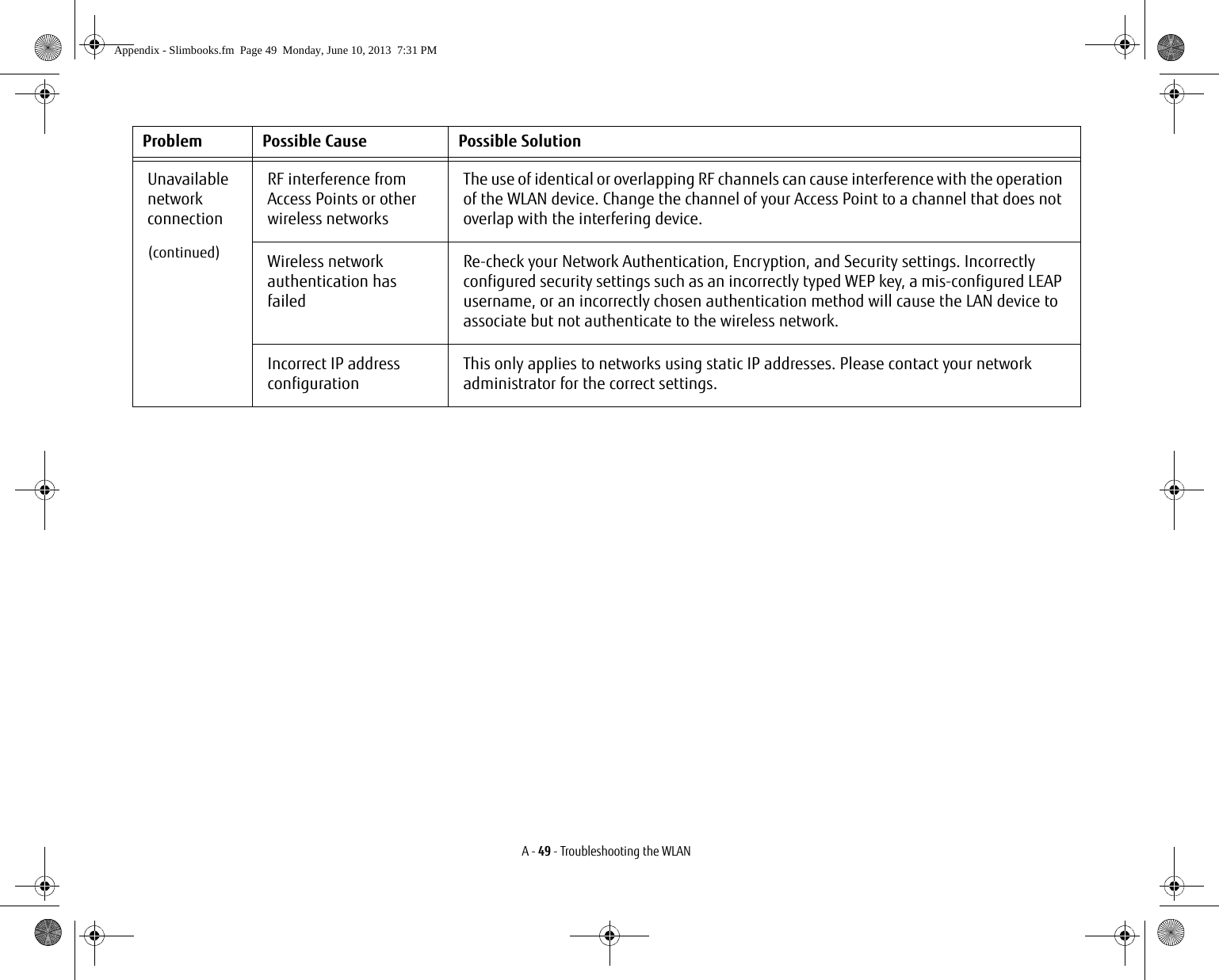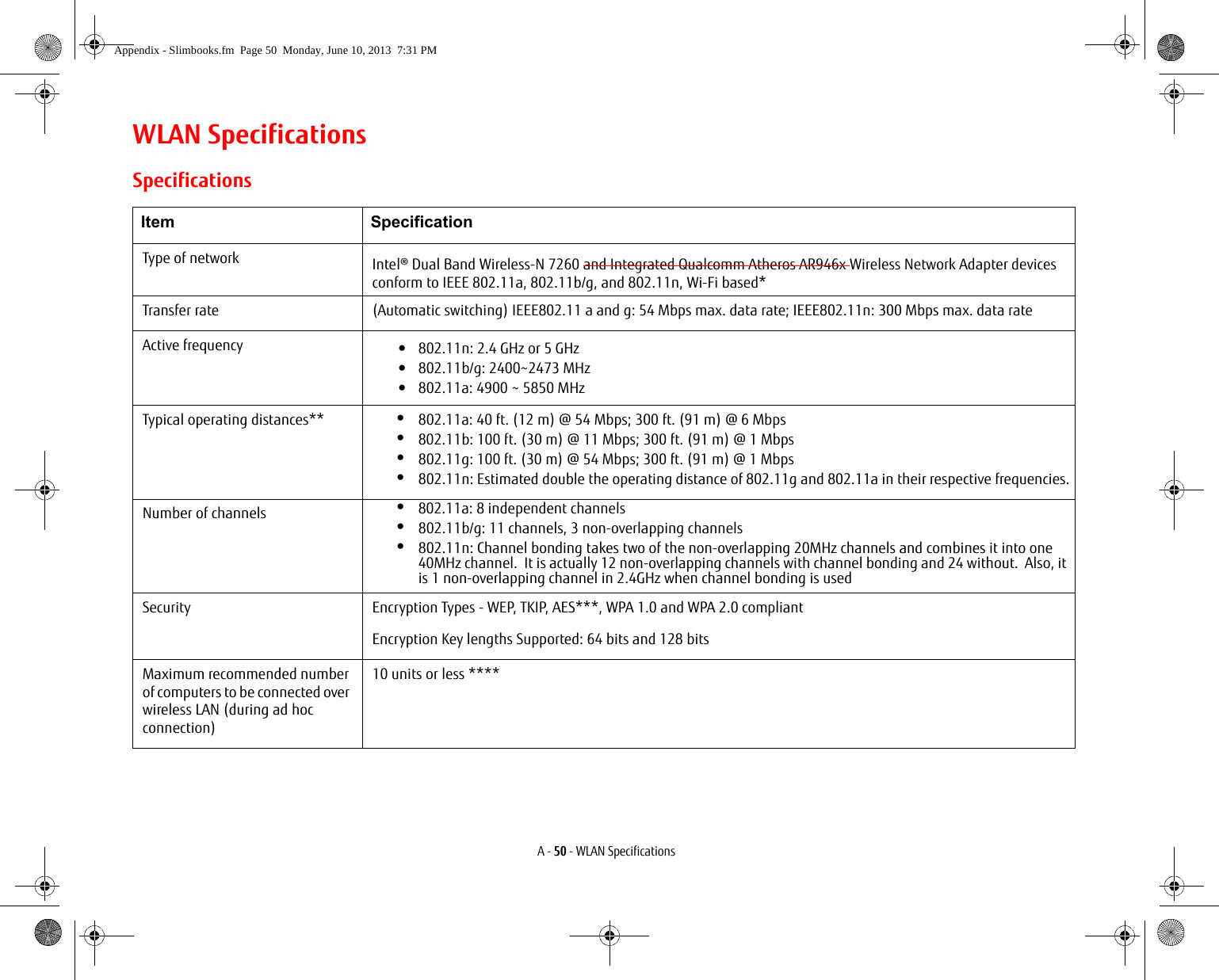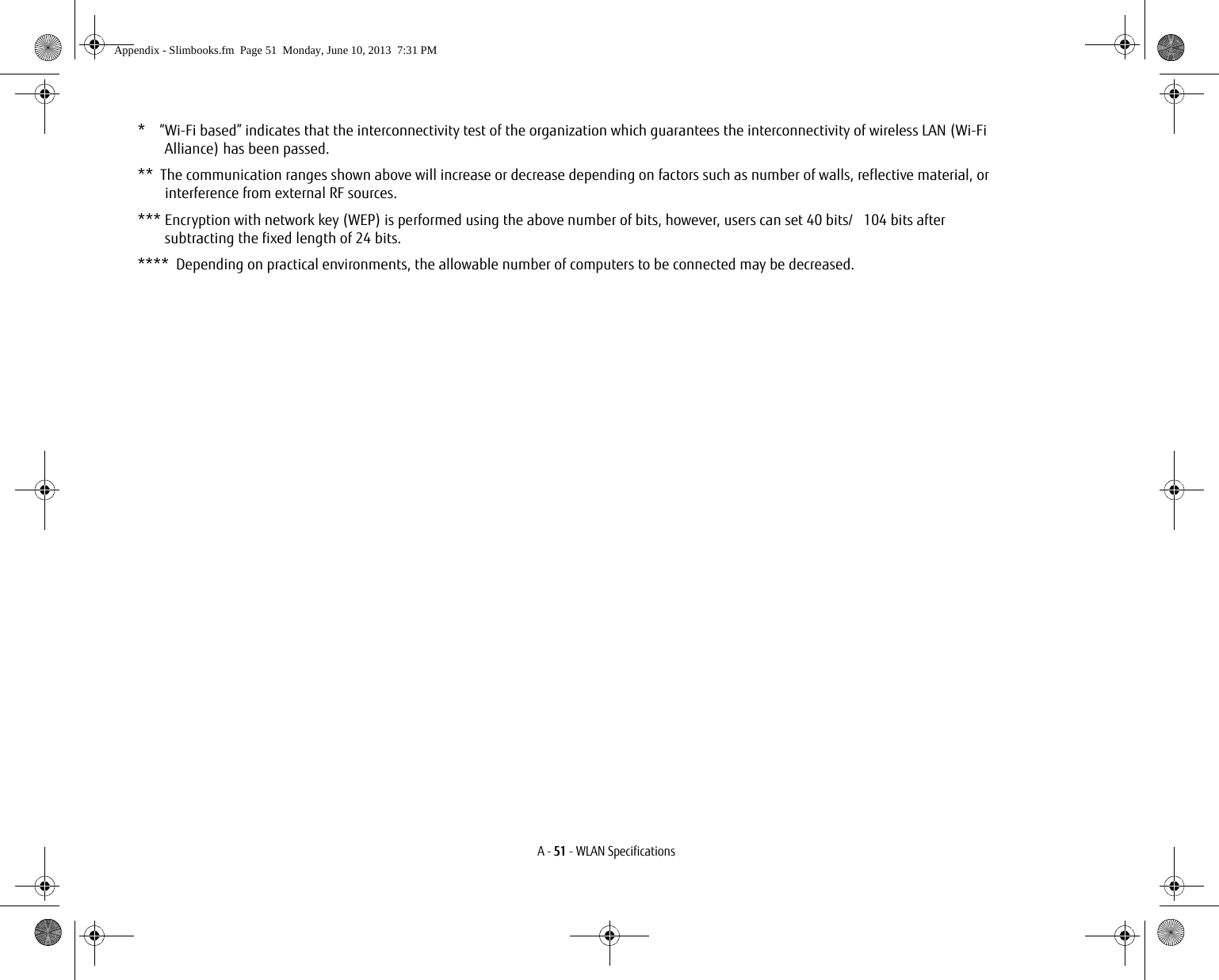Fujitsu Client Computing EM7355D CELLULAR/PCS/GSM/EDGE/CDMA/WCDMA/LTE MODEM User Manual Appendix Slimbooks
Fujitsu Limited CELLULAR/PCS/GSM/EDGE/CDMA/WCDMA/LTE MODEM Appendix Slimbooks
Contents
- 1. User Manual
- 2. User Install Guide
- 3. USERS MANUAL
- 4. Users Manual
User Manual
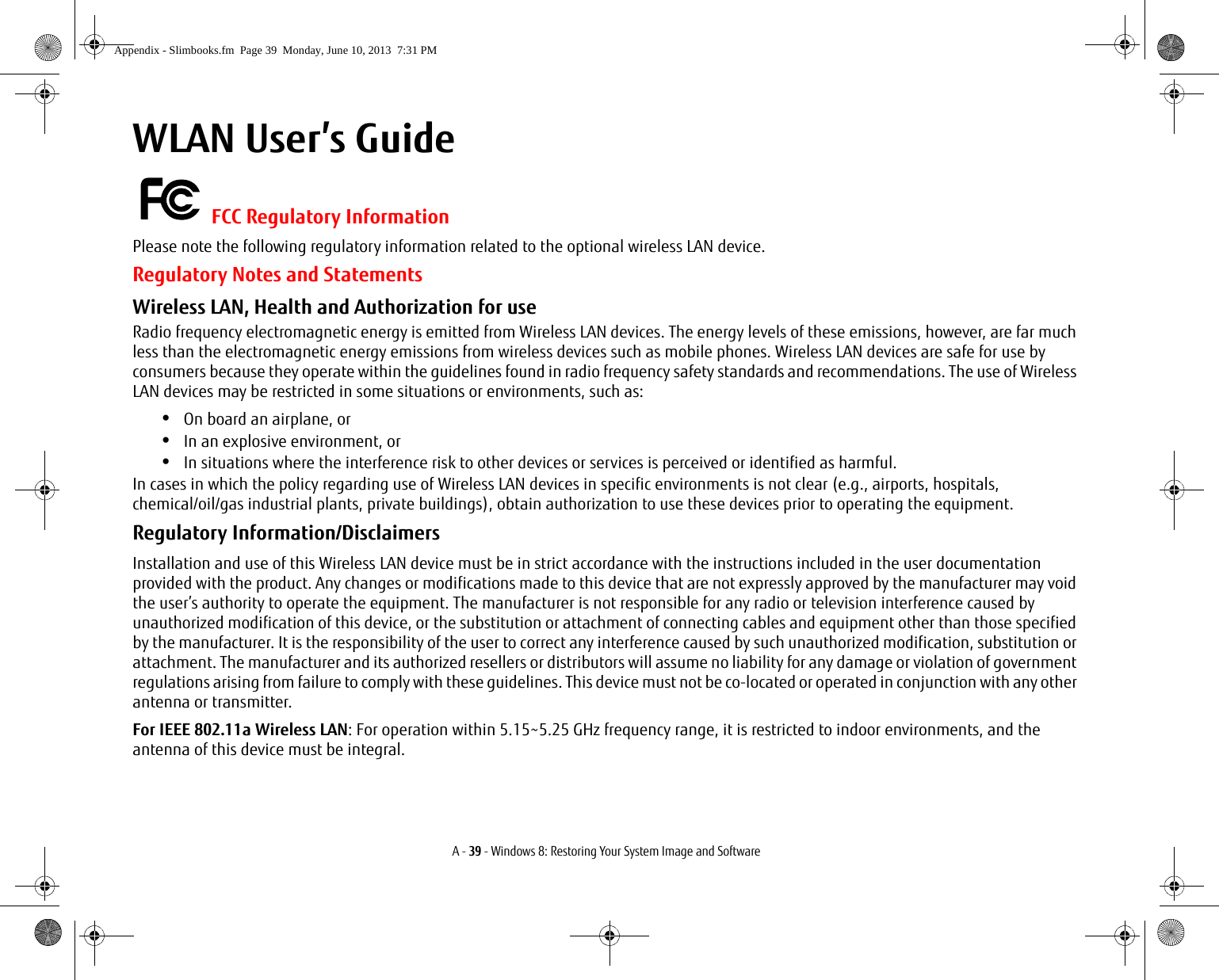
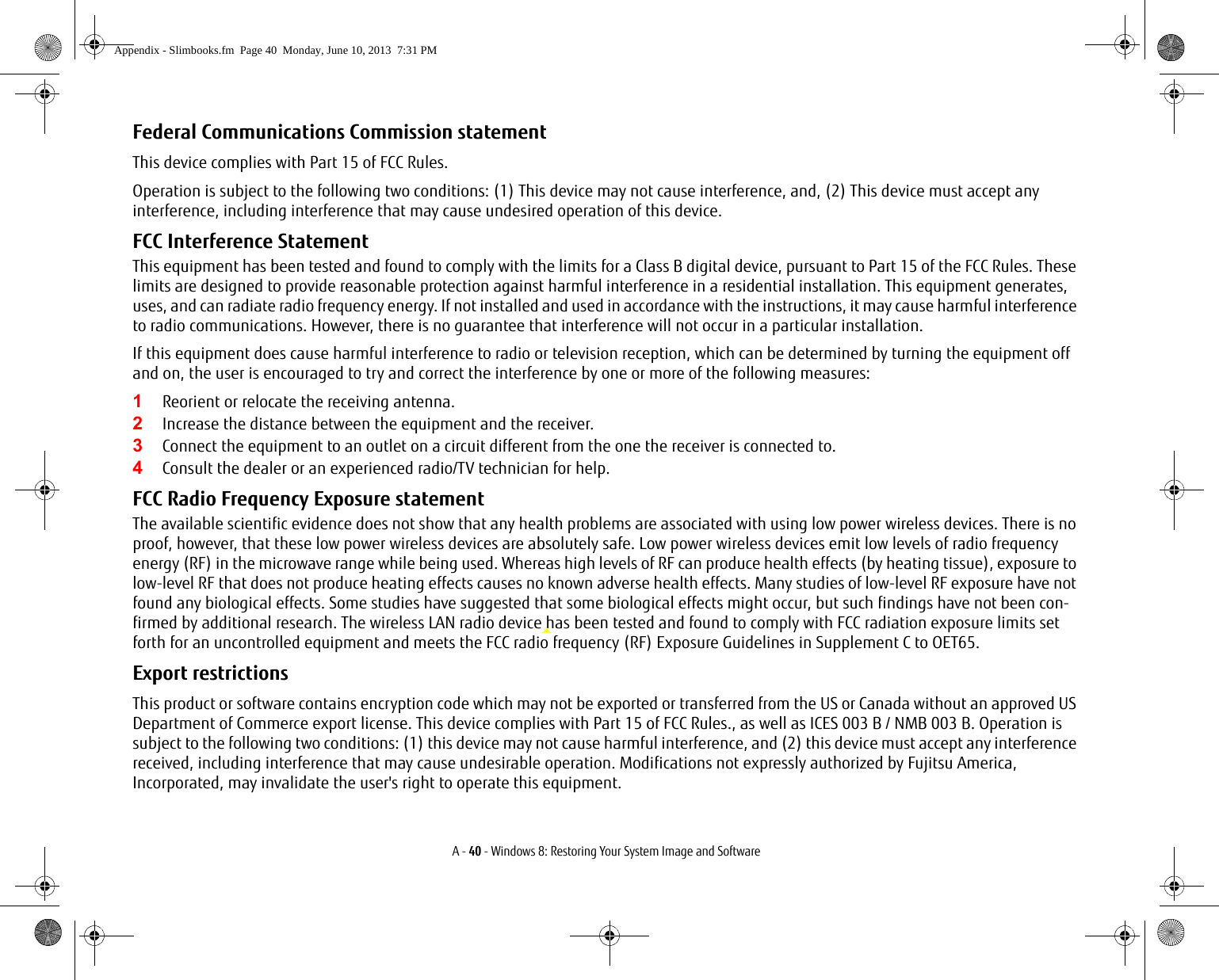
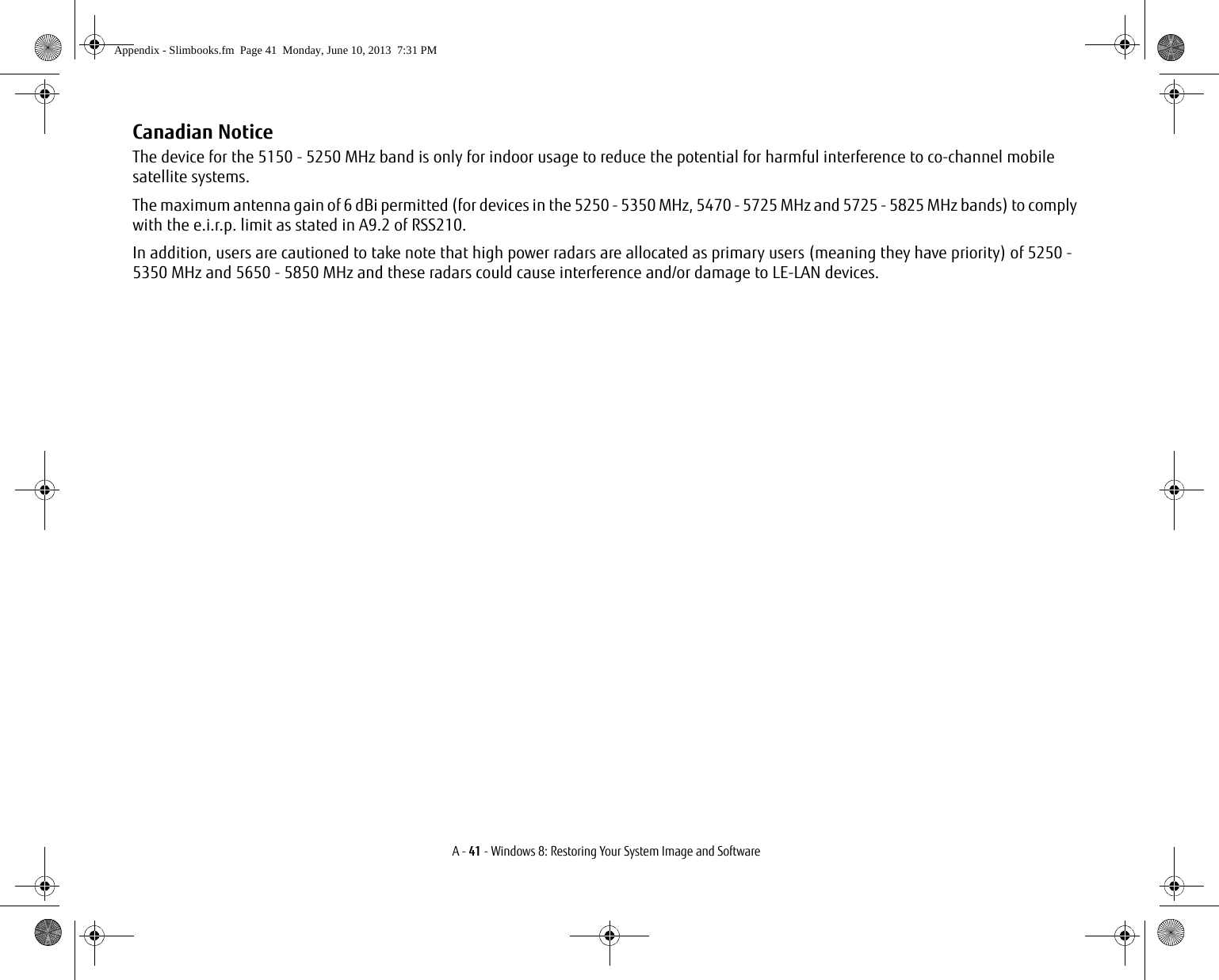
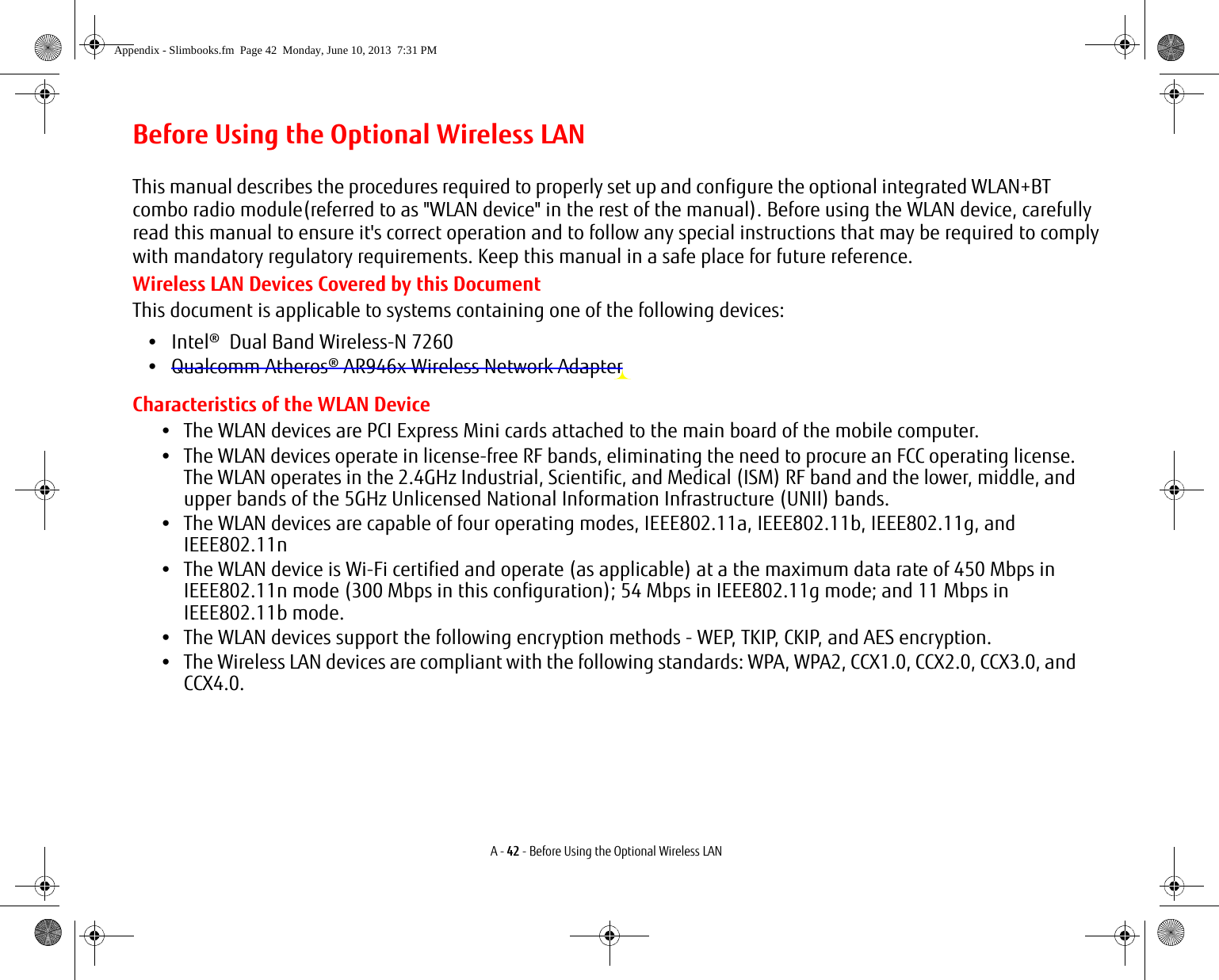
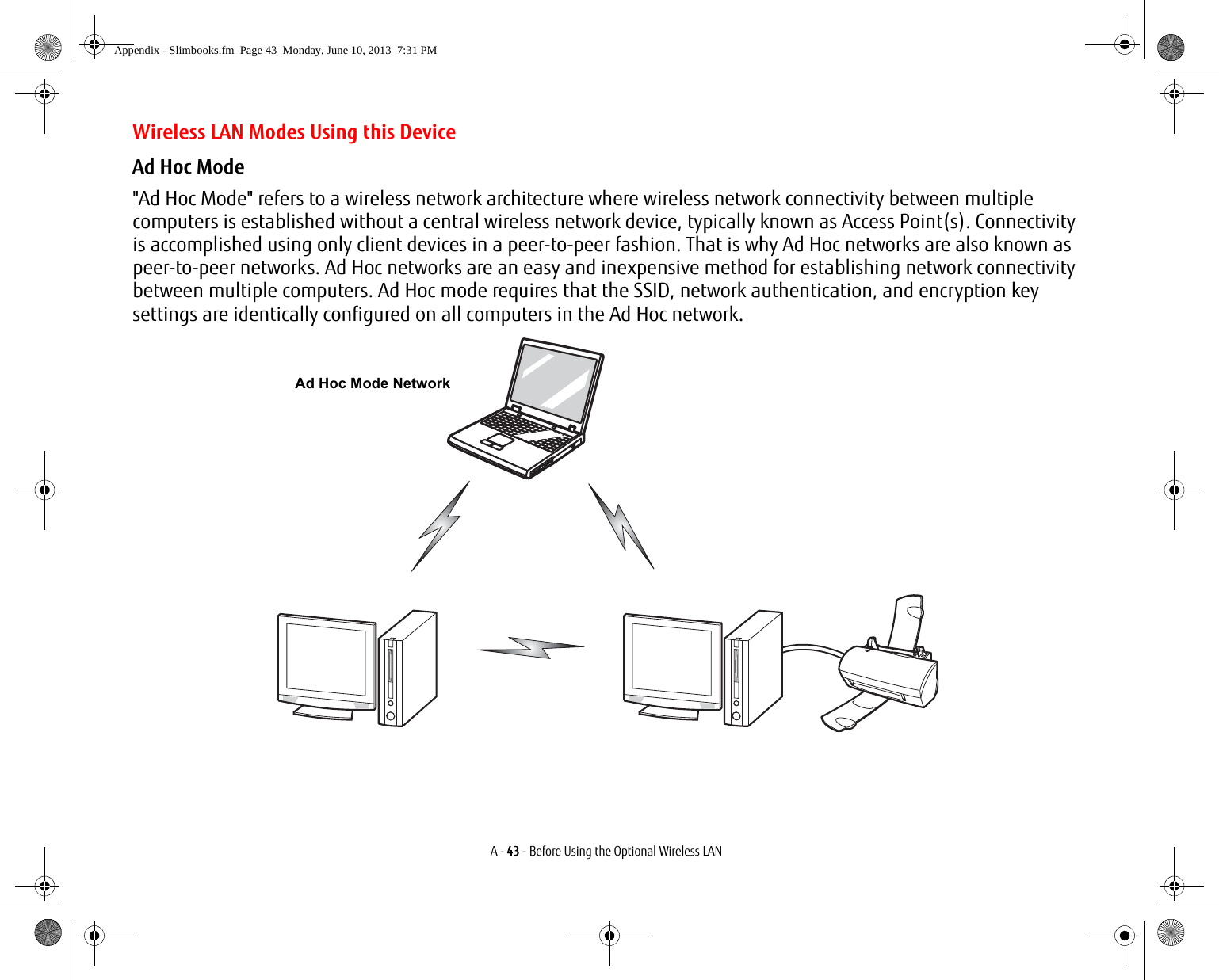
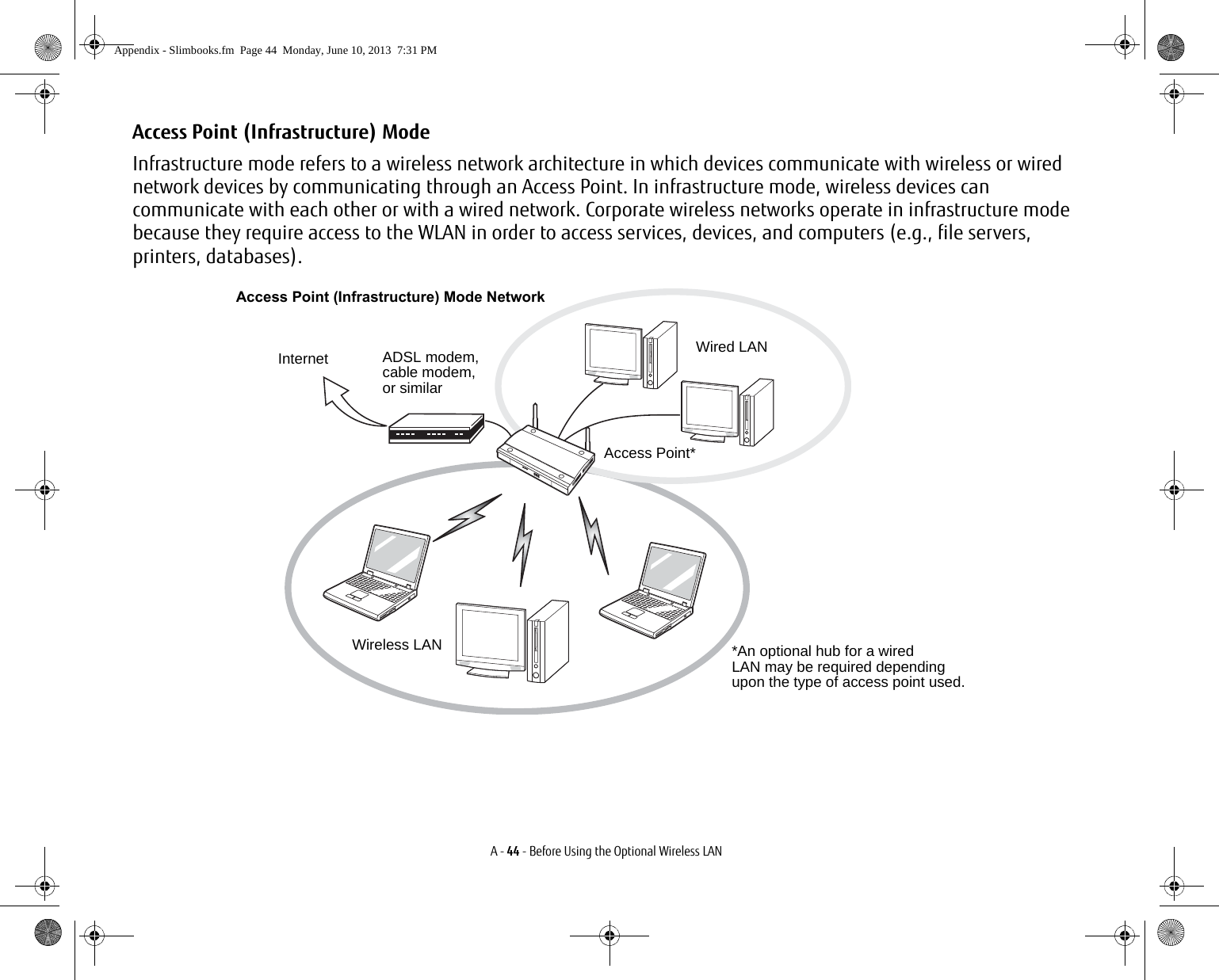
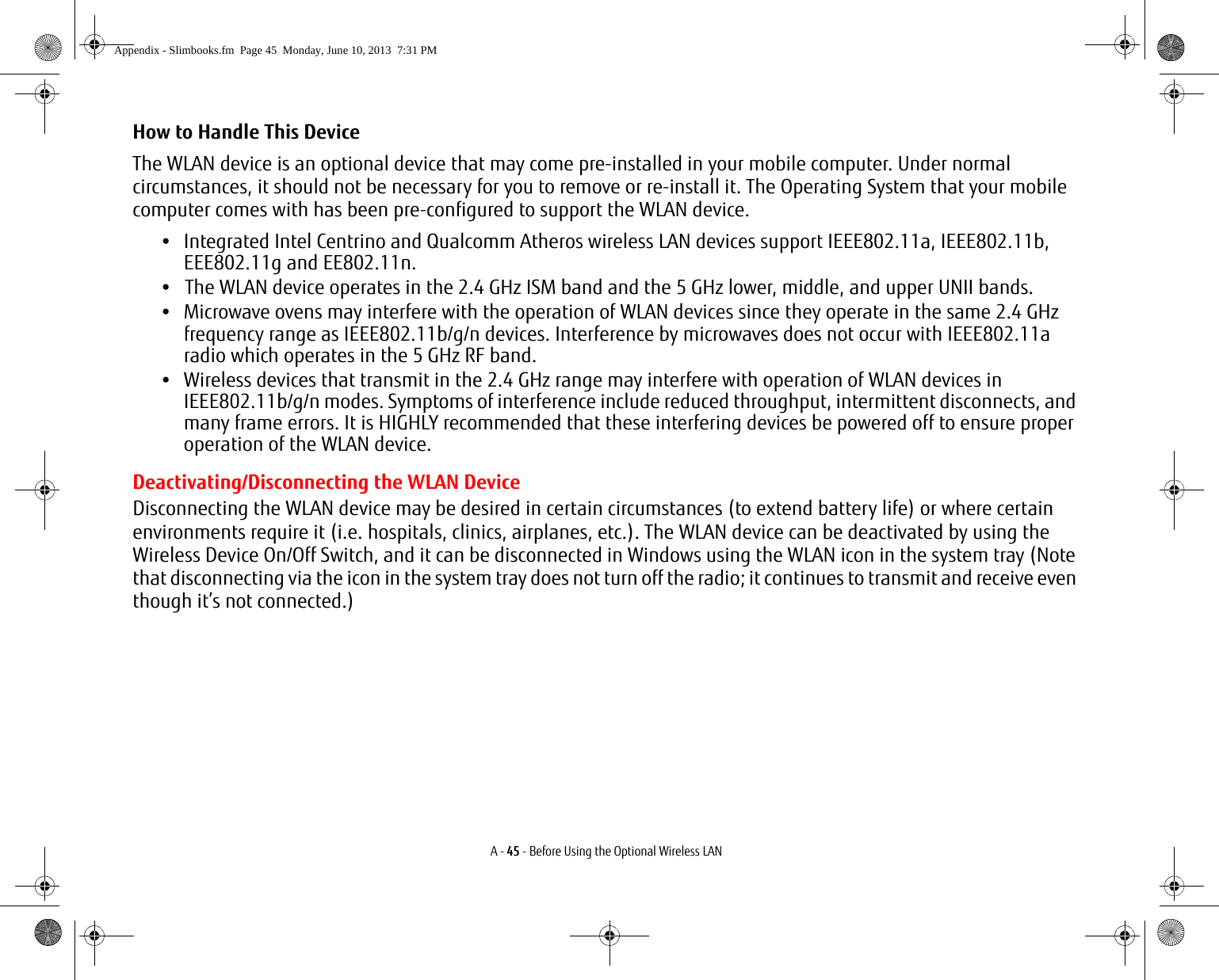
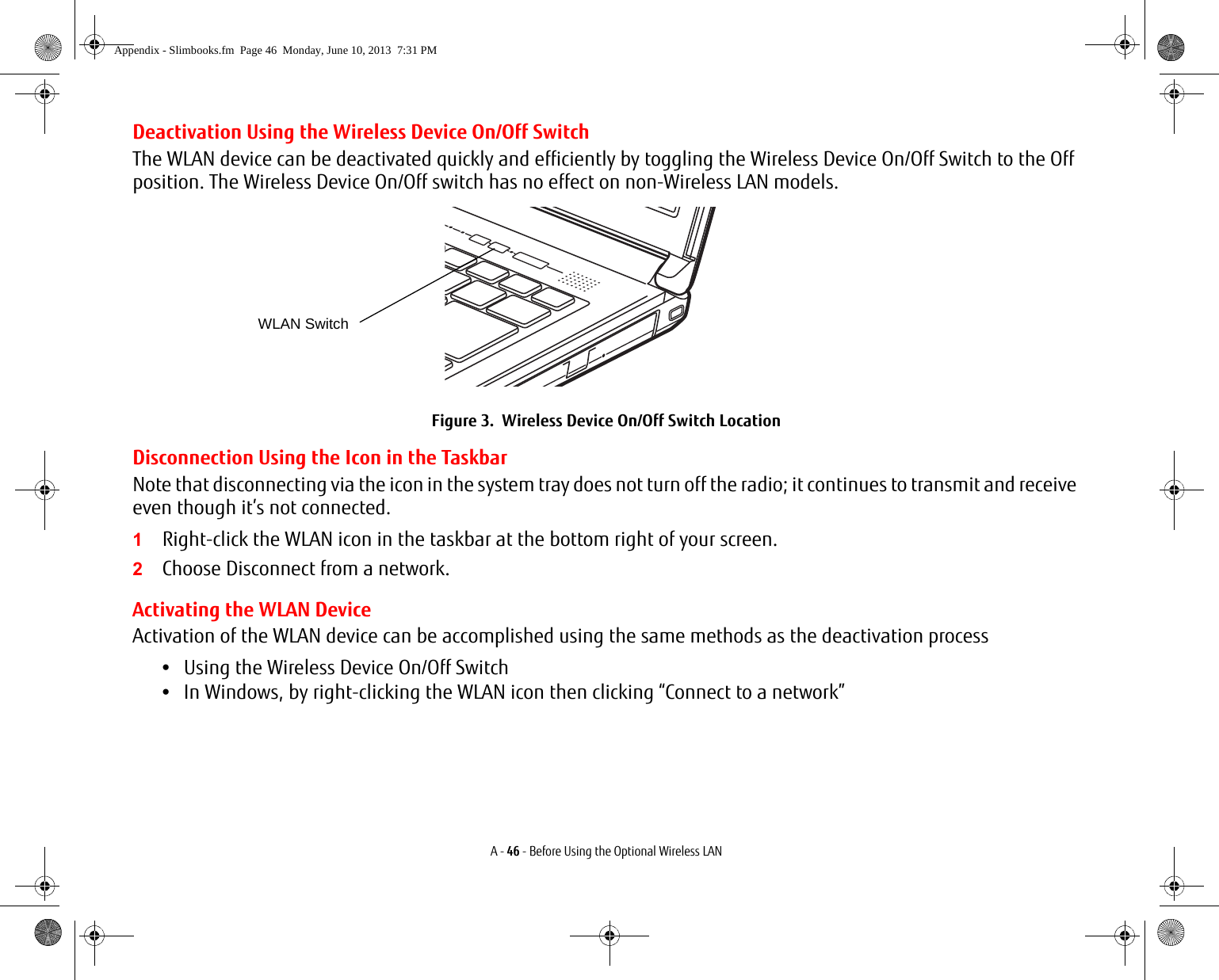
![A - 47 - Configuring the Wireless LANConfiguring the Wireless LANThe optional WLAN device can be configured to establish wireless network connectivity using the software that is built into Windows. Support for most industry standard security solutions is contained in this software.Pre-defined parameters will be required for this procedure. Please consult with your network administrator for these parameters:Configuring the WLAN Using Windows The WLAN device can be configured to establish wireless network connectivity using the software that is built into Windows Vista. Support for most industry standard security solutions is contained in this software.Pre-defined parameters are required for this procedure. Consult your network administrator for these parameters:1From the Modern Start screen, press [Windows]+[X], then select Control Panel from the menu.2If the Control Panel is not in Classic View, select Classic View from the left panel. Double-click the Network and Sharing Center icon.3Select "Setup a new connection or network".4Depending upon what type of connection you would like to make, make a selection. For an infrastructure network, select “Manually connect to a wireless network”.5Enter the required information. It may be necessary to consult with your network administrator for some of the information.6In the event you require assistance, go to the Network and Sharing Center window (Control Panel > Network and Sharing Center), and type in relevant keywords in the Search box. Connection to the networkAfter you have configured your computer, you can connect to an active network by performing the following steps:1Click on the WLAN icon in the system tray.2Select “Connect to a network”.3Select a network from the list that appears, and click the [Connect] button.Appendix - Slimbooks.fm Page 47 Monday, June 10, 2013 7:31 PM](https://usermanual.wiki/Fujitsu-Client-Computing/EM7355D.User-Manual/User-Guide-2073409-Page-9.png)
![A - 48 - Troubleshooting the WLANTroubleshooting the WLANCauses and countermeasures for troubles you may encounter while using your wireless LAN are described in the following table. Problem Possible Cause Possible SolutionUnavailable network connectionIncorrect network name (SSID) or network keyAd hoc connection: verify that the network names (SSID’s) and network keys (WEP) of all computers to be connected have been configured correctly. SSID’s and WEP key values must be identical on each machine.Access Point (Infrastructure) connection: set the network name (SSID) and network key to the same values as those of the access point. Set the Network Authentication value identically to that of the Access Point. Please consult your network administrator for this value, if necessary. Weak received signal strength and/or link qualityAd hoc connection: Retry connection after shortening the distance to the destination computer or removing any obstacles for better sight.Access Point (Infrastructure) connection: Retry connection after shortening the distance to the access point or removing any obstacles for better sight.The WLAN device was deactivated or is disabledCheck if the wireless switch is turned On. Go to Start > Control Panel, and double-click on Windows Mobility Center. If the wireless network is off, click the [Turn wireless on] button.The computer to be connected is turned offCheck if the computer to be connected is turned ON.Incorrectly configured network settingsRecheck the configuration of your network settings.Appendix - Slimbooks.fm Page 48 Monday, June 10, 2013 7:31 PM](https://usermanual.wiki/Fujitsu-Client-Computing/EM7355D.User-Manual/User-Guide-2073409-Page-10.png)
